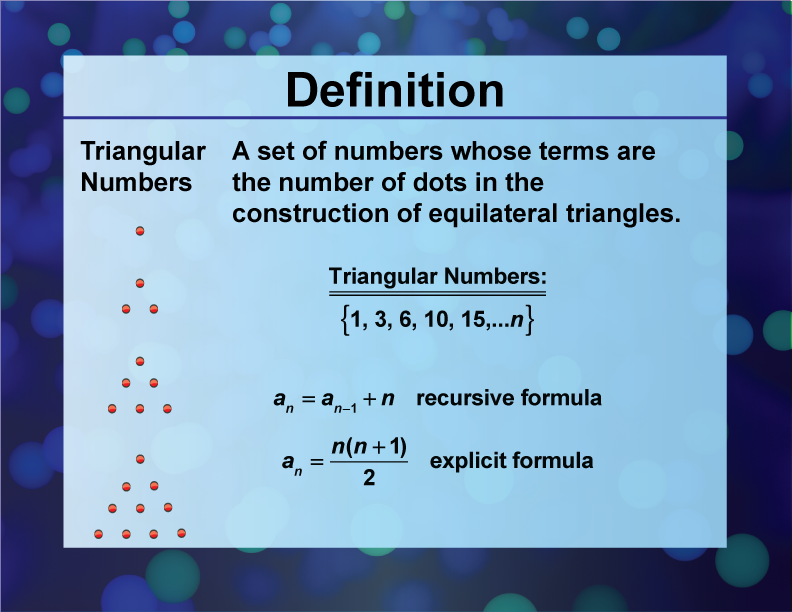
Display Title
Definition--Sequences and Series Concepts--Triangular Numbers
Display Title
Triangular Numbers

Topic
Sequences and Series
Definition
Triangular numbers are numbers that can be represented by an equilateral triangle.
Description
Triangular numbers are fundamental concepts in mathematics, representing numbers that can form an equilateral triangle. This concept is crucial in various mathematical applications, including algebra, geometry, and number theory.
In real-world applications, triangular numbers are used in combinatorial problems and in determining the number of connections in a network. They are also used in computer algorithms and game design. Algebraically, triangular numbers can be represented as

where n is a positive integer. These are the first few triangular numbers:
1, 3, 6, 10, 15,....
Understanding triangular numbers is essential for math education as it helps students develop skills in recognizing and analyzing patterns in numbers. It provides a foundation for more advanced topics in algebra and geometry, and aids in developing problem-solving skills.
For a complete collection of terms related to sequences and series click on this link: Sequences and Series Collection
| Common Core Standards | CCSS.MATH.CONTENT.6.SP.B.4, CCSS.MATH.CONTENT.HSF.IF.A.3, CCSS.MATH.CONTENT.HSF.BF.A.2, CCSS.Math.CONTENT.HSF.LE.A.2 |
|---|---|
| Grade Range | 6 - 9 |
| Curriculum Nodes |
Algebra • Sequences and Series • Sequences |
| Copyright Year | 2021 |
| Keywords | data analysis, arithmetic sequence, common difference, definitions, glossary terms, geometric sequence, common ratio |